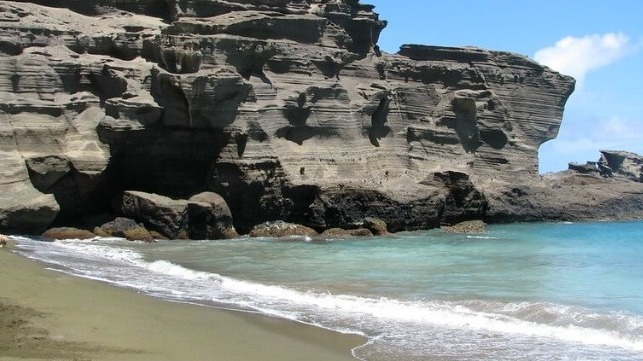Top Dredging Firm Joins Project to Fight CO2 - With Green Sand

The largest dredging company in America is joining forces with a research-driven initiative that wants to pull carbon out of the atmosphere using saltwater, wave action and sand - three ingredients that are very familiar to dredging operators.
Great Lakes Dredge & Dock is partnering with Project Vestas, a clean tech startup that is studying a simple system for enhanced weathering - that is, speeding up the natural chemical process in which atmospheric CO2 is turned into limestone. In this process, known to geologists as the carbonate-silicate cycle, the common mineral olivine reacts with CO2 to produce biarbonate (HCO3). Marine calcifying organisms - like corals, diatoms and clams - combine bicarbonate with calcium to form calcium carbonate for their bones and shells. When these organisms die and are buried in sediment, the carbon is sequestered (and, after millions of years of time and pressure, turned into limestone).
This process happens naturally today, and it absorbs about one gigaton of CO2 each year, enough to take up about three percent of human emissions.
That isn't enough to combat climate change on its own, at least not on the timescale required, so Project Vestas wants to speed it up - by grinding up olivine and spreading it on beaches. By putting all the ingredients for the reaction in one place, then letting wave action stir the mixture, Project Vestas believes that it can help make excess CO2 a problem of the past. Adequately scaled up, this "coastal carbon capture" technology could absorb atmospheric carbon at a gigaton scale, the project's backers believe.
Great Lakes is the first member of the dredging industry to announce its participation in Project Vesta’s initiative. The two organizations will pursue joint research goals and develop new methods for the safe, effective use of coastal carbon capture, GLDD said in a statement.
“This partnership will help make Great Lakes a more effective participant in the effort to address coastal erosion and climate change impacts,” said Great Lakes’ Senior Vice President Bill Hanson. “We are proud to raise the bar on climate-change fighting technologies, and invite others in the coastal resilience industry to join this important cause.”
From a technical perspective, Project Vestas' sand-spreading proposal bears resemblance to beach replenishment - the process of putting new sand on beaches using dredgers. GLDD has considerable expertise in this line of work, and its beach-replenishment efforts can be seen in Atlantic City, Coney Island, Palm Beach, Nags Head, and many other waterfront destinations around the world.
